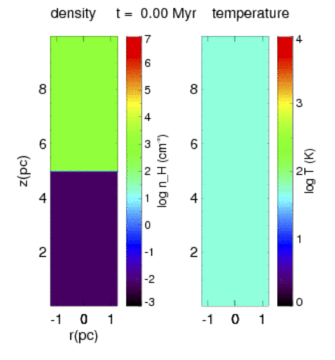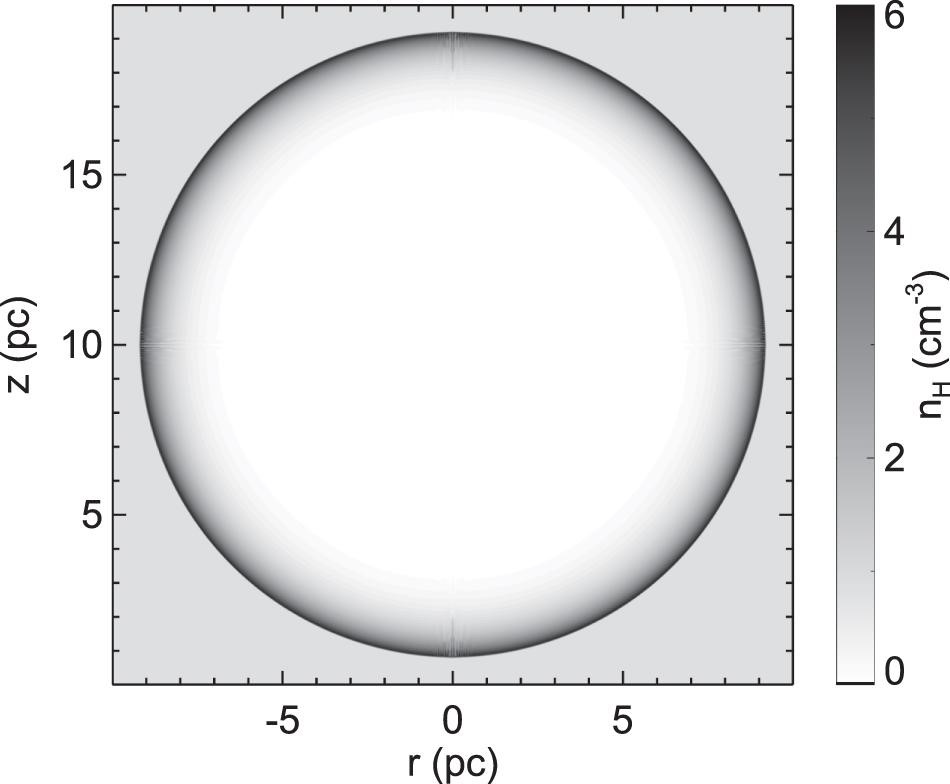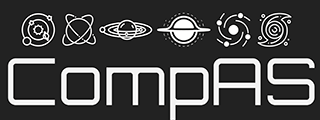Kinetic Modules
A suite of codes for astrophysical hydrochemistry
Kinetic Modules (KM) is a suite of codes for astrophysical hydrochemical simulations including large chemical networks, radiation, fluid dynamics, and self-gravity. No existing code yet has its wide multiphysics coupled capabilities. Recently optimized by using sparse-matrix techniques, and benchmarked for photon-dominated regions (PDRs), codes in this suite have also been used to study FUV and magnetic effects in bright-rimmed clouds, and radiation-driven implosion models.
Current abilities of this code include astrochemical simulation of PDRs, cold cores, and hot corinos, in addition to axisymmetric hydrodynamic simulations with self-gravity in cylindrical coordinates.
- Hybrid hydrodynamic + chemical algorithm with radiation
-
Hydrodynamic module:
- Conservative Godunov-type finite volume scheme, with heating and cooling. Optionally isothermal. Self-gravity.
- Axisymmetric 2D Eulerian grid
- Chemical species advected as scalar quantities
-
Chemical module:
- Adopts databases involving gas-gas and gas-grain reactions, such as UMIST and KIDA, including photoreactions.
- Implicitly solves the simultaneous equations of nonequilibrium chemistry with an ODE solver, and finds the energy changes due to thermal processes with transfer of UV radiation.
- Sparse-matrix techniques for efficient treatment of the large but sparse stoichiometry matrix used to compute reaction rates
- Benchmarked for photon-dominated regions
- FUV effects in bright-rimmed clouds, and radiation-driven implosion models


Hydrochemical examples. FUV-illuminated slabs. Benchmark results of KM compared with four other codes, taken from Model F1 in Motoyama et al. (2015). (left). A benchmark chemical network of 31 species undergoing 287 reactions was used, with the plot showing five species. On the right is a dynamic movie showing time evolution.




